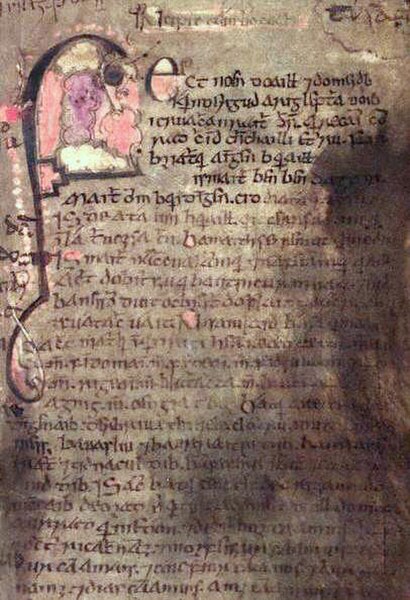Tochmarc Étaíne, meaning "The Wooing of Étaín/Éadaoin", is an early text of the Irish Mythological Cycle, and also features characters from the Ulster Cycle and the Cycles of the Kings. It is partially preserved in the manuscript known as the Lebor na hUidre, and completely preserved in the Yellow Book of Lecan, written in language believed to date to the 8th or 9th century. It tells of the lives and loves of Étaín, a beautiful mortal woman of the Ulaid, and her involvement with Aengus and Midir of the Tuatha Dé Danann. It is frequently cited as a possible source text for the Middle English Sir Orfeo. Harvard professor Jeffrey Gantz describes the text as displaying the "poetic sense of law" in Irish legal society.
Étaín and Midir, illustration by Stephen Reid in T. W. Rolleston's The High Deeds of Finn (1910)
Irish mythology is the body of myths indigenous to the island of Ireland. It was originally passed down orally in the prehistoric era. In the early medieval era, some myths were transcribed by Christian monks, who heavily altered and Christianised the myths. Irish mythology is the best-preserved branch of Celtic mythology.
Riders of the Sidhe, a 1911 painting of the aos sí or Otherworldly people of the mounds, by the artist John Duncan
Cuchulain in Battle by Joseph Christian Leyendecker, 1911
The Fomorians, as depicted by John Duncan (1912)
Folio 53 of the Book of Leinster. Medieval manuscripts are the main source for Irish mythology and early literature.





